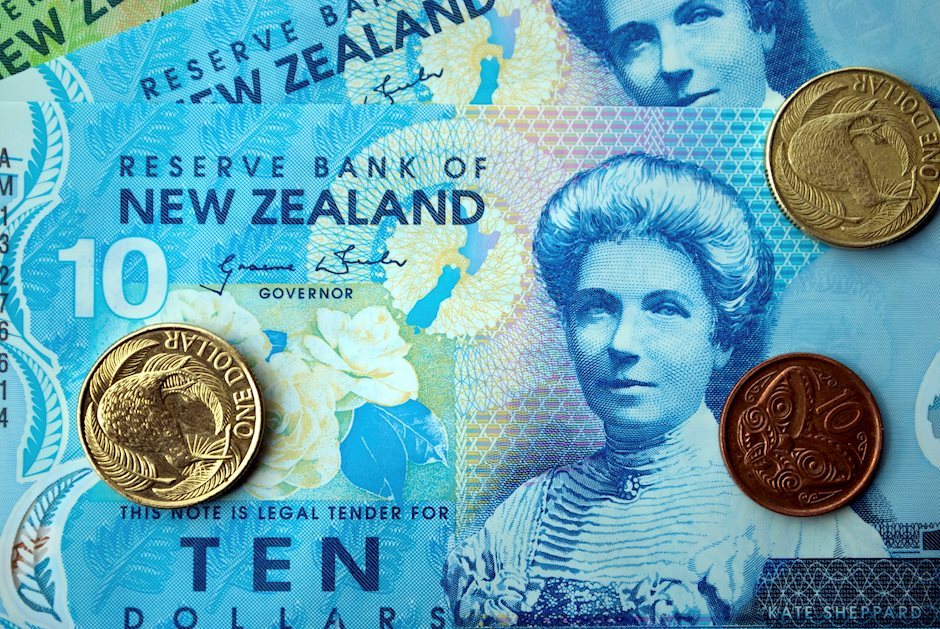NZD/USD plummets below 0.5820 as antipodeans weaken across the board
- NZD/USD faces an intense sell-off amid uncertainty ahead of China’s two-day annual economic conference.
- The RBNZ is expected to cut interest rates by 50 bps in the policy meeting in February 2025.
- The next move in the US Dollar will be influenced by the US inflation data for November.

The NZD/USD pair plunges to near 0.5820 in Tuesday’s North American session. The Kiwi pair faces intense selling pressure as antipodean currencies weaken amid uncertainty ahead of China’s closed-door annual economic conference to be held on Dec 11-12.
China’s Politburo is expected to announce big-bank economic stimulus to boost domestic consumption and stabilize their beaten-down real estate sector, a scenario that will boost trading activities with the New Zealand (NZD) and strengthen the New Zealand Dollar’s (NZD) appeal, being one of the leading trading partners of China.
Domestically, the Kiwi dollar remains under pressure as market expectations for the Reserve Bank of New Zealand (RBNZ) to cut interest rates again by 50 basis points (bps) at the first meeting of 2025 in February. RBNZ dovish bets fuelled further after comments from NZ Prime Minister Christopher Luxon emphasized on lowering inflation and interest rates to stimulate the economy.
Meanwhile, a further recovery in the US Dollar (USD) has also weighed on the Kiwi pair. The US Dollar Index (DXY), which tracks the Greenback’s value against six major currencies, rises to near 106.40. The Greenback gains even though market expectations that the Federal Reserve (Fed) will cut interest rates by 25 basis points (bps) to 4.25%-4.50% remain firm.
Going forward, investors will focus on the United States (US) Consumer Price Index (CPI) data for November that could influence Fed dovish bets, which will be published on Wednesday.
New Zealand Dollar FAQs
The New Zealand Dollar (NZD), also known as the Kiwi, is a well-known traded currency among investors. Its value is broadly determined by the health of the New Zealand economy and the country’s central bank policy. Still, there are some unique particularities that also can make NZD move. The performance of the Chinese economy tends to move the Kiwi because China is New Zealand’s biggest trading partner. Bad news for the Chinese economy likely means less New Zealand exports to the country, hitting the economy and thus its currency. Another factor moving NZD is dairy prices as the dairy industry is New Zealand’s main export. High dairy prices boost export income, contributing positively to the economy and thus to the NZD.
The Reserve Bank of New Zealand (RBNZ) aims to achieve and maintain an inflation rate between 1% and 3% over the medium term, with a focus to keep it near the 2% mid-point. To this end, the bank sets an appropriate level of interest rates. When inflation is too high, the RBNZ will increase interest rates to cool the economy, but the move will also make bond yields higher, increasing investors’ appeal to invest in the country and thus boosting NZD. On the contrary, lower interest rates tend to weaken NZD. The so-called rate differential, or how rates in New Zealand are or are expected to be compared to the ones set by the US Federal Reserve, can also play a key role in moving the NZD/USD pair.
Macroeconomic data releases in New Zealand are key to assess the state of the economy and can impact the New Zealand Dollar’s (NZD) valuation. A strong economy, based on high economic growth, low unemployment and high confidence is good for NZD. High economic growth attracts foreign investment and may encourage the Reserve Bank of New Zealand to increase interest rates, if this economic strength comes together with elevated inflation. Conversely, if economic data is weak, NZD is likely to depreciate.
The New Zealand Dollar (NZD) tends to strengthen during risk-on periods, or when investors perceive that broader market risks are low and are optimistic about growth. This tends to lead to a more favorable outlook for commodities and so-called ‘commodity currencies’ such as the Kiwi. Conversely, NZD tends to weaken at times of market turbulence or economic uncertainty as investors tend to sell higher-risk assets and flee to the more-stable safe havens.
Author

Sagar Dua
FXStreet
Sagar Dua is associated with the financial markets from his college days. Along with pursuing post-graduation in Commerce in 2014, he started his markets training with chart analysis.

















